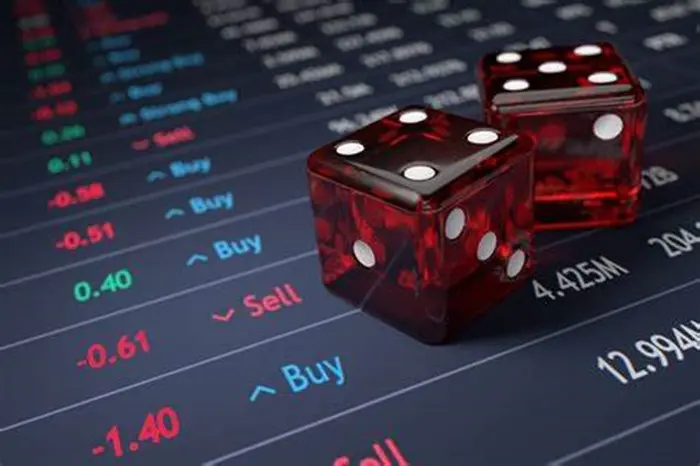In the world of Forex (foreign exchange) trading, understanding the term “lot” is crucial for both beginners and experienced traders. The concept of a lot refers to the standardized unit of trade in the Forex market. When you enter into a Forex trade, you are buying or selling a currency pair in specific quantities, and these quantities are measured in lots.
This article will dive deep into the concept of a lot in Forex, explaining its significance, types, and how it affects trading decisions. Whether you’re new to Forex or looking to refresh your knowledge, this guide will help clarify the concept of lots in Forex trading.
Understanding the Basics of Forex Trading
Before we delve into what a lot is, it’s important to understand the basic structure of Forex trading. Forex trading involves buying one currency while simultaneously selling another. These currency pairs are usually quoted in terms of a base currency and a quote currency, such as EUR/USD, GBP/JPY, or USD/JPY.
Forex is traded in different quantities, and this is where the concept of “lot” comes into play. In simple terms, a lot defines the amount of currency you are trading. The lot size directly impacts the value of your trade, which in turn affects your potential profits and losses.
What is a Lot in Forex?
A “lot” in Forex is a standard unit of measurement for a trade. It is the quantity of currency units in a single trade. The size of a lot varies depending on the type of lot you’re trading. There are three main types of lots in Forex trading: standard lots, mini lots, and micro lots. Let’s take a closer look at each.
Standard Lot
A standard lot is the most common type of lot in Forex. One standard lot is equivalent to 100,000 units of the base currency. For example, in a EUR/USD trade, one standard lot would represent 100,000 euros being traded. Since Forex trading usually involves pairs, the size of your trade (in terms of the quote currency) will vary according to the currency pair you are trading.
For instance, if you buy one standard lot of EUR/USD, you would be purchasing 100,000 euros and simultaneously selling the equivalent value of US dollars. The value of each pip movement in a standard lot is $10, which means that for every 1-pip movement in the currency pair, you will gain or lose $10 depending on whether you are in a profit or loss.
Mini Lot
A mini lot is smaller than a standard lot and equals 10,000 units of the base currency. For example, if you are trading the EUR/USD pair and purchase a mini lot, you would be trading 10,000 euros. The value of each pip movement in a mini lot is $1, so for every 1-pip movement in the EUR/USD pair, you would make or lose $1.
Mini lots offer a more accessible entry point for new traders, as they require less capital to trade compared to standard lots. This allows traders to take smaller positions and manage risk more effectively.
Micro Lot
A micro lot is the smallest trading unit available in the Forex market. A micro lot represents 1,000 units of the base currency. In the case of a EUR/USD pair, one micro lot would mean you are trading 1,000 euros. The value of each pip movement in a micro lot is $0.10, so every 1-pip change in the EUR/USD exchange rate would result in a profit or loss of $0.10.
Micro lots are ideal for beginner traders who want to practice trading with smaller amounts of money. They also provide a great opportunity for risk management, as they allow you to trade with a smaller exposure to market fluctuations.
The Importance of Lot Size in Forex Trading
The lot size you choose when trading Forex directly influences the potential gains or losses from a trade. Here are some reasons why understanding lot sizes is crucial in Forex trading:
1. Risk Management
Choosing the correct lot size helps you manage your risk effectively. Larger lot sizes expose you to higher risks, as the value of each pip movement is greater. For example, trading a standard lot could result in a $10 profit or loss per pip movement, while trading a micro lot would result in just $0.10 per pip. By carefully selecting the appropriate lot size for your risk tolerance, you can control how much of your trading capital is exposed to risk.
2. Leverage
Leverage allows traders to control a larger position than their actual capital would normally allow. For example, if you are trading with 100:1 leverage, you could control a $100,000 position with just $1,000 in margin. However, leverage also amplifies both profits and losses. If you are trading with a larger lot size, the effect of leverage will be more pronounced. Therefore, it’s essential to understand the relationship between lot size, leverage, and risk in order to make informed trading decisions.
3. Trading Volume
The lot size you choose determines the trading volume and affects how much of a currency you are buying or selling in a given trade. Larger lot sizes lead to higher trading volumes, which can lead to larger profits or losses. Choosing the right lot size is important in managing your overall trading volume, which in turn impacts the liquidity and execution speed of your trades.
4. Account Size and Margin Requirements
Your account size also plays a role in determining the lot size you should trade. Traders with larger accounts can afford to trade larger lot sizes, while traders with smaller accounts should trade smaller lot sizes to avoid overleveraging. Additionally, each broker has different margin requirements for different lot sizes. Understanding these requirements is crucial to avoid margin calls and liquidation.
How to Calculate the Value of a Pip for Different Lot Sizes
Understanding how to calculate the value of a pip is essential in Forex trading. The pip value varies depending on the size of your trade and the currency pair being traded.
Here is a simple formula for calculating the pip value:
Pip Value = (One Pip / Exchange Rate) * Lot Size
Let’s use an example to clarify this:
If you are trading EUR/USD and the current exchange rate is 1.2000, and you are trading one standard lot (100,000 units of EUR), the pip value would be:
Pip Value = (0.0001 / 1.2000) * 100,000 = 8.33 USD
This means that for every 1-pip movement in the EUR/USD exchange rate, you would make or lose $8.33 when trading one standard lot.
For mini and micro lots, the pip value would decrease proportionally:
- For a mini lot (10,000 units), the pip value would be $0.83.
- For a micro lot (1,000 units), the pip value would be $0.08.
Understanding pip values for different lot sizes allows you to make more informed decisions and plan your risk management strategies more effectively.
Choosing the Right Lot Size for Your Trading Strategy
Selecting the right lot size depends on several factors, including your risk tolerance, account size, and trading strategy. Here are some tips on how to choose the right lot size:
1. Assess Your Risk Tolerance
Before deciding on the lot size, it’s essential to assess your risk tolerance. The larger the lot size, the higher the potential risk. Smaller lot sizes allow you to control risk more easily, but they may also reduce the potential for larger profits. Make sure that your lot size aligns with the amount of risk you are comfortable taking on in each trade.
2. Consider Your Trading Account Size
The size of your trading account will affect how much of your account balance you are willing to risk on each trade. A common rule of thumb is to risk no more than 1-2% of your account balance on a single trade. For example, if your account balance is $1,000, risking 1% per trade would mean you are willing to lose up to $10 on each trade. Adjusting your lot size to stay within your risk parameters is key to effective risk management.
3. Use Position Sizing Tools
Many brokers and trading platforms offer position sizing tools that help you calculate the appropriate lot size based on your risk tolerance, account size, and the specific trade you are considering. These tools take the guesswork out of choosing the right lot size and can help you make more disciplined trading decisions.
4. Align Lot Size with Your Trading Goals
Your lot size should align with your overall trading goals. For instance, if you’re a scalper looking to make small, frequent profits, you may prefer to trade micro lots to minimize risk. On the other hand, if you’re a swing trader looking for larger price moves over a longer period, you might opt for standard lots, as they offer greater potential for profits.
Conclusion
Understanding the concept of a “lot” in Forex trading is fundamental to your success as a trader. The lot size determines the amount of currency you are trading, the value of each pip movement, and the overall risk and reward of your trade. Whether you are trading standard lots, mini lots, or micro lots, it’s crucial to choose the right lot size based on your trading strategy, account size, and risk tolerance.
By mastering the concept of lot sizes, you can better manage your trades, control your risk, and ultimately improve your performance in the Forex market. Always remember that successful Forex trading is not just about understanding the market, but also about managing your risk and executing disciplined trading strategies.
Related topics:






























